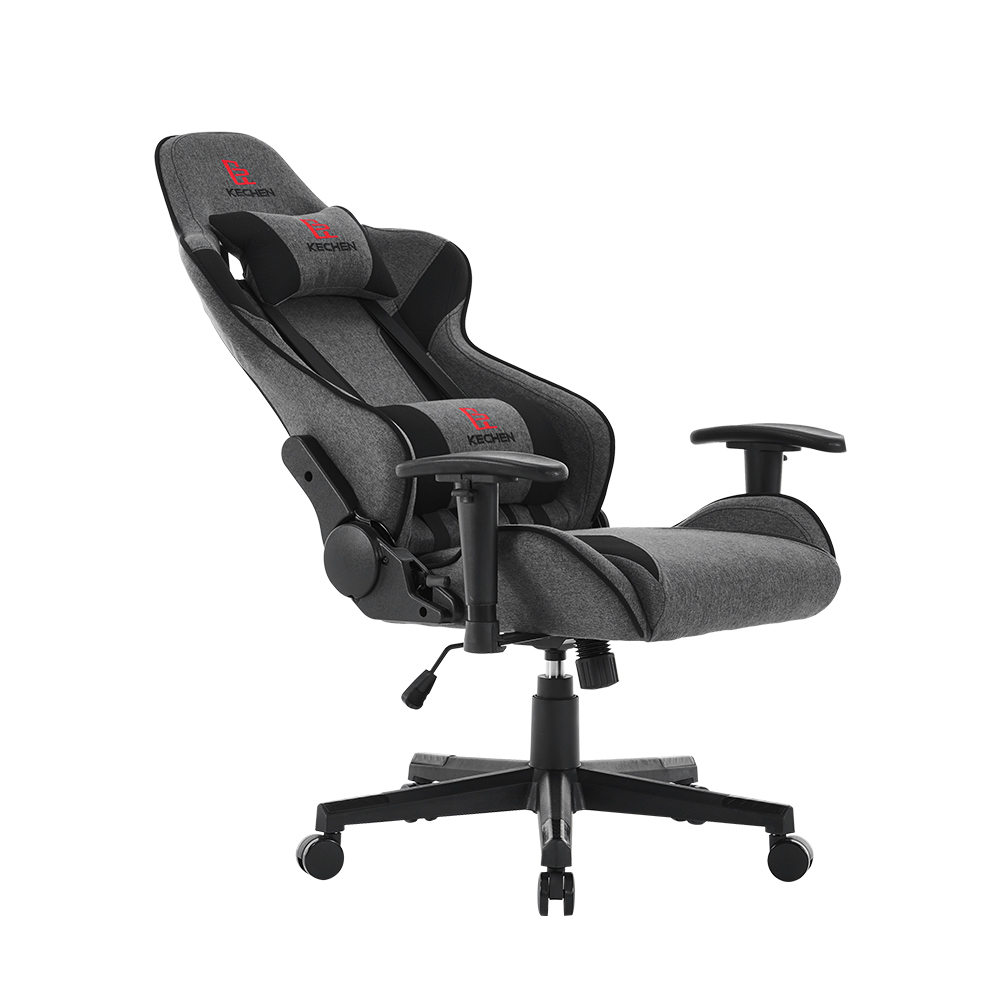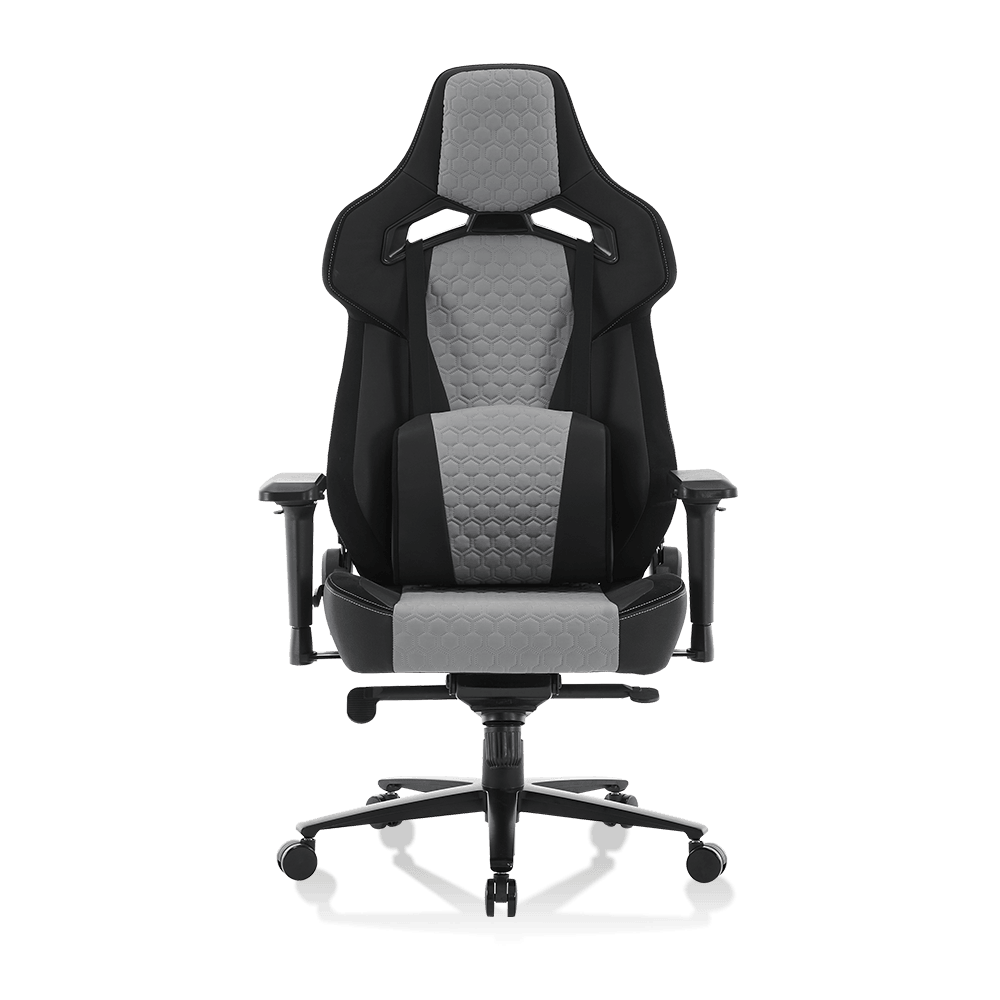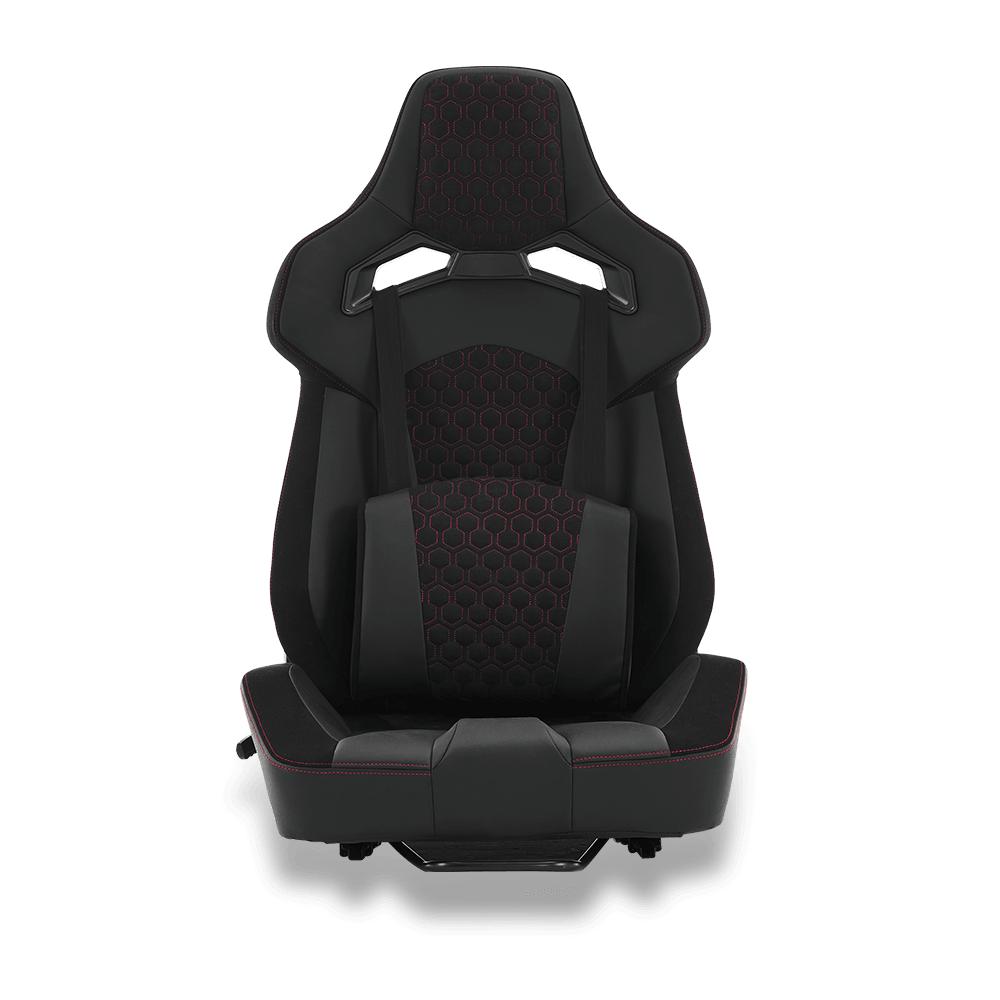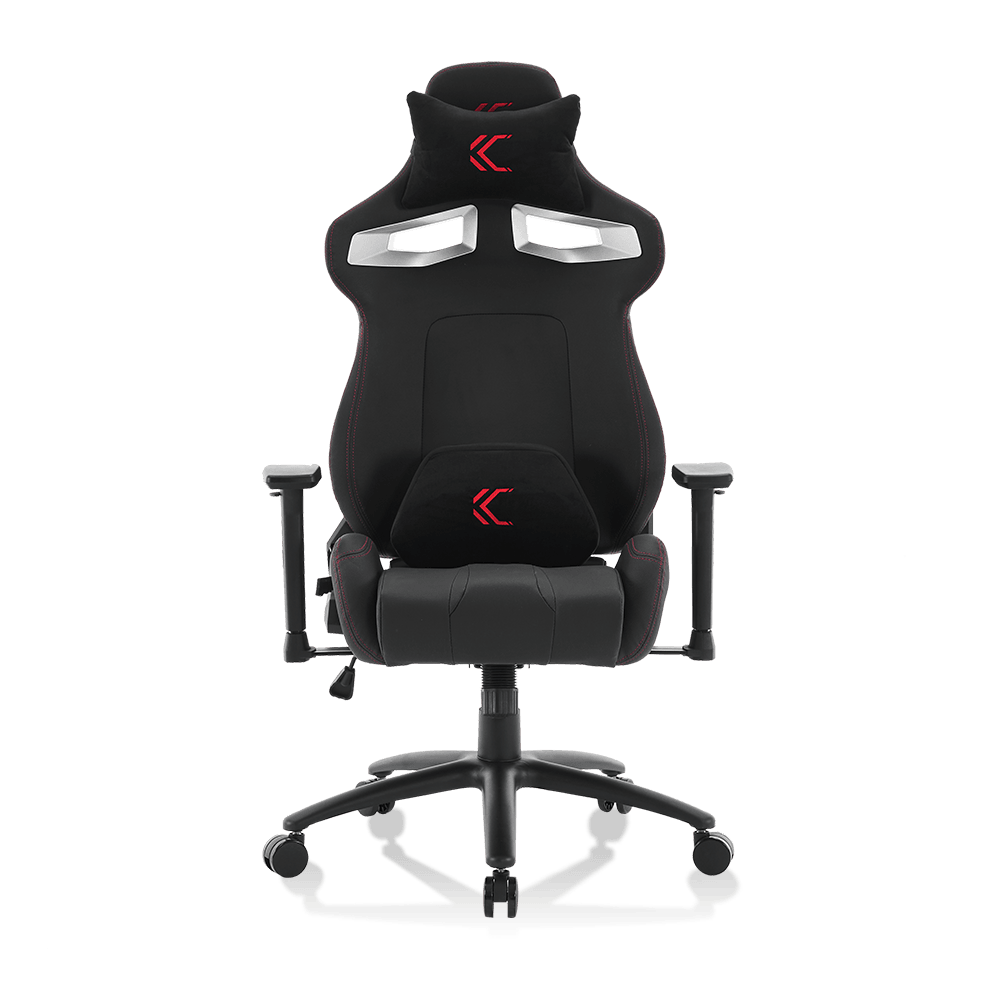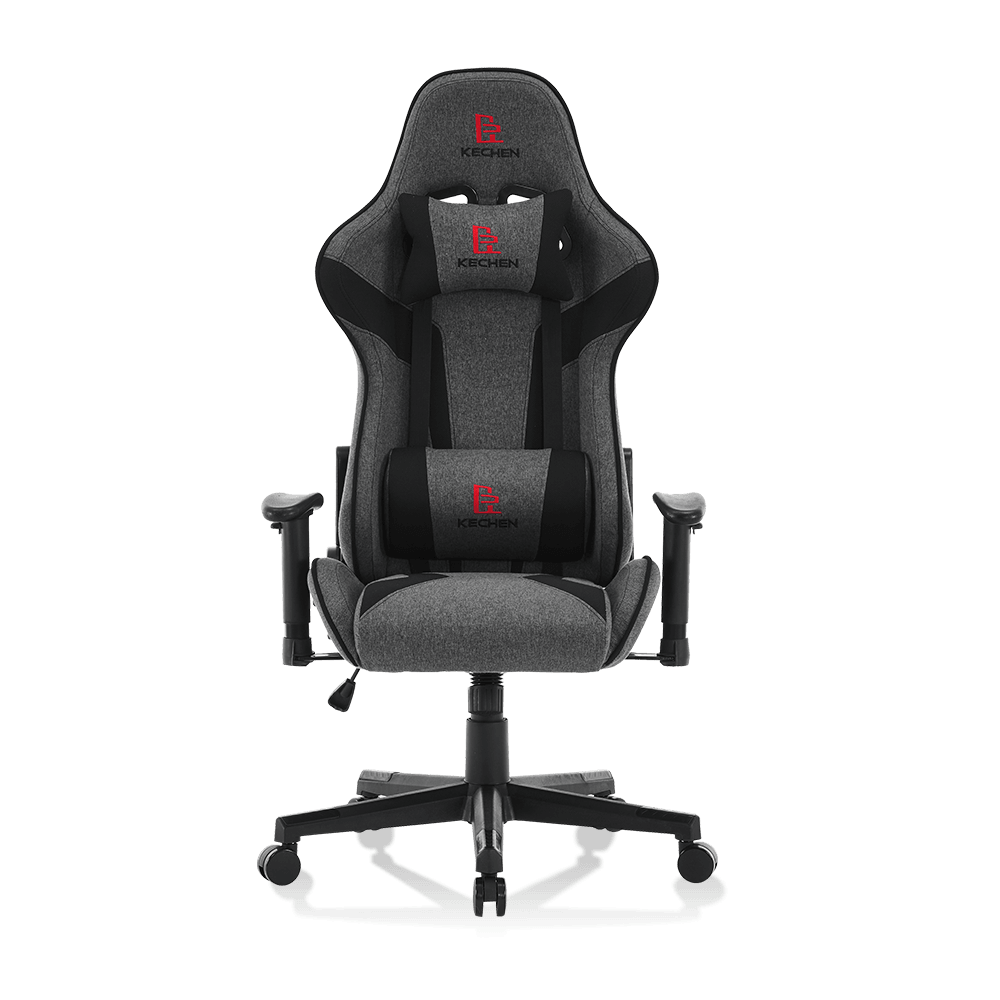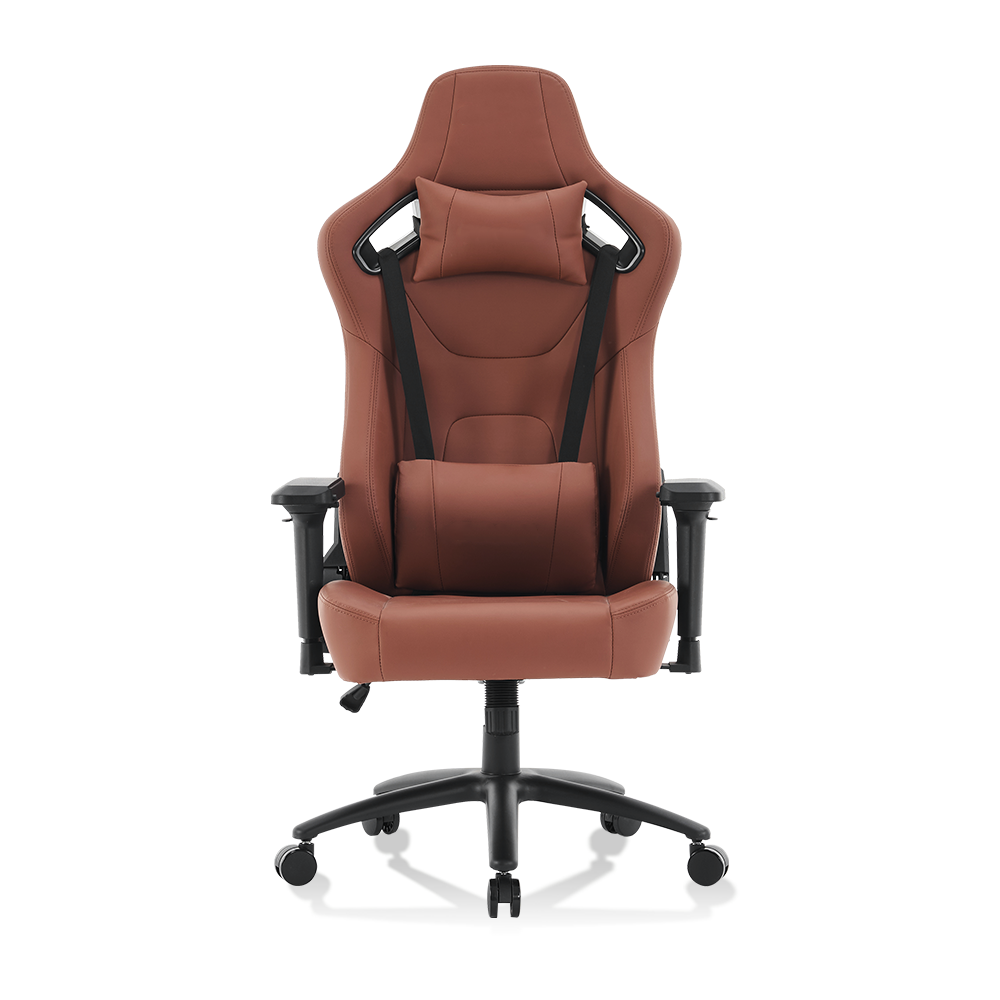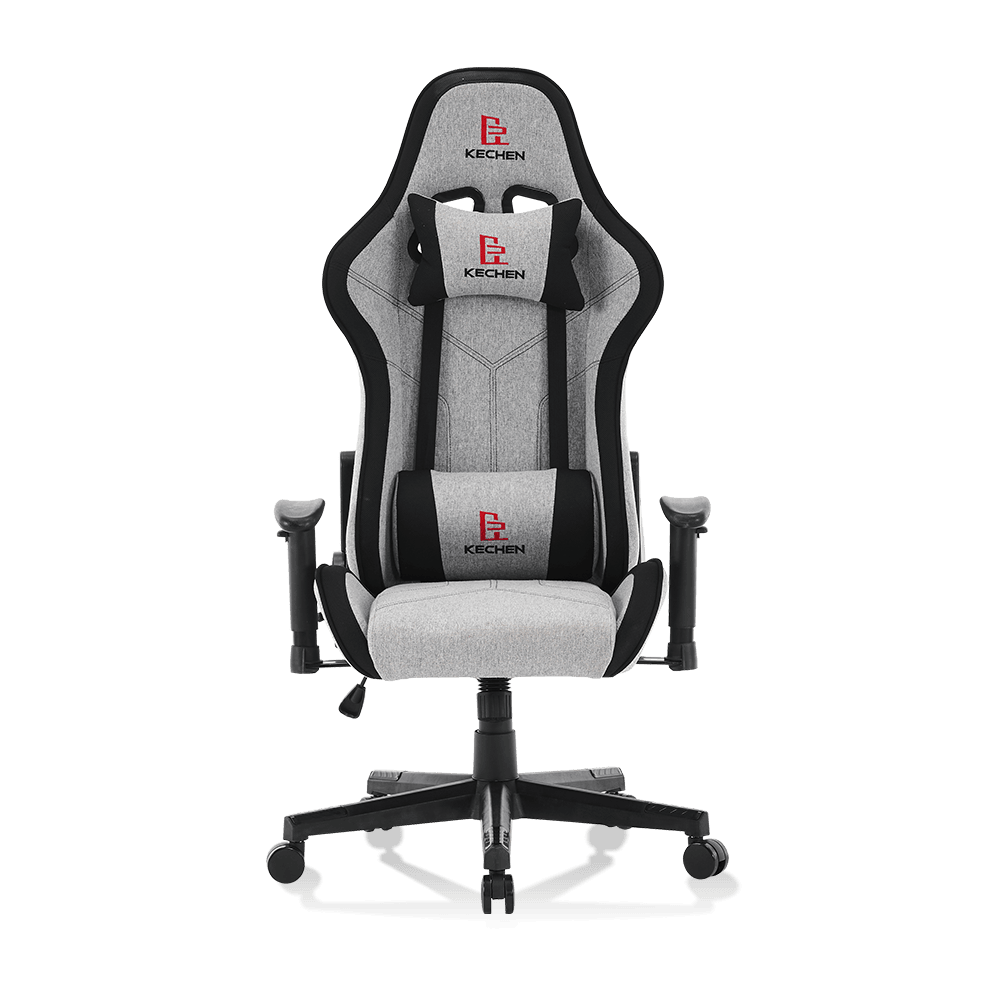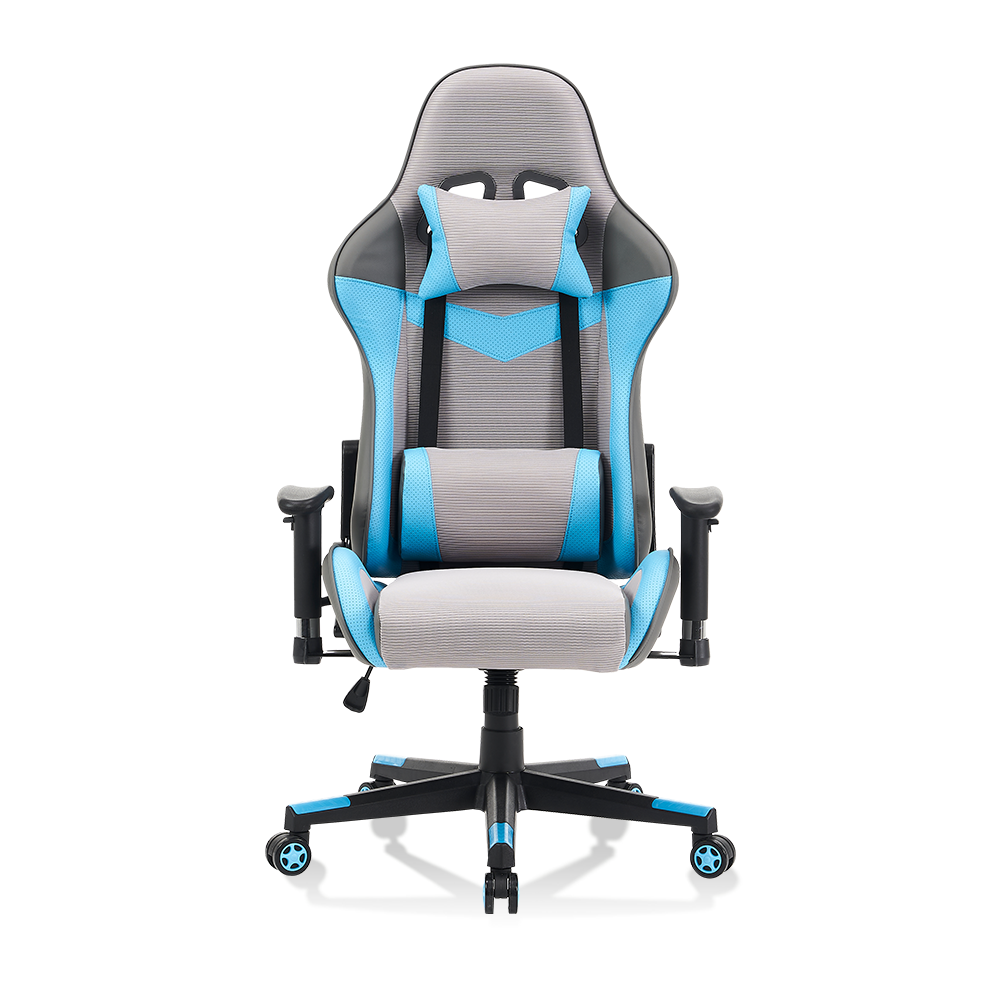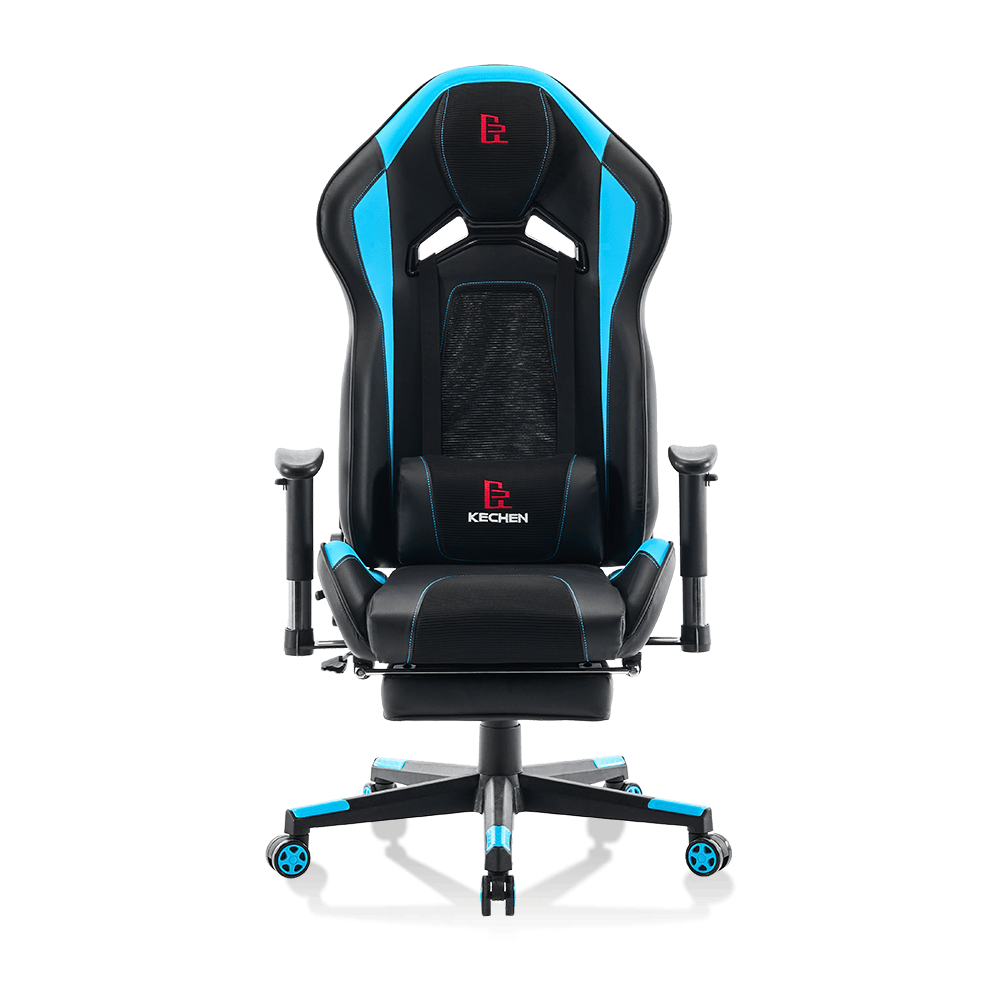For gamers and professionals alike, long hours spent in a chair can lead to discomfort, not just from poor posture, but from heat and moisture buildup. The quest for a truly comfortable ergonomic computer gaming chair must include a critical evaluation of breathability. This article delves deep into the materials that dictate how well a chair "breathes," directly impacting your comfort, focus, and endurance during extended sessions. Understanding these material properties is key to choosing a chair that keeps you cool, dry, and supported from the first hour to the last.
1. The Gold Standard: Mesh Backrests for Maximum Airflow
When it comes to pure, unadulterated breathability, mesh is the undisputed champion. This material is engineered with thousands of tiny interconnected fibers that create a porous structure, allowing air to circulate freely directly through the backrest. This continuous airflow is the most effective mechanism for dissipating body heat and preventing sweat accumulation, making it a top choice for a breathable mesh gaming chair for summer.
- Active Ventilation: Unlike solid materials that trap heat, mesh promotes convective cooling. As air moves through the mesh, it carries away the warm, moist air generated by your body.
- Ergonomic Conformity: High-quality mesh offers a unique type of support. It flexes and contours to the shape of your back, providing dynamic support that moves with you, which aligns perfectly with the ergonomic principles applied in product development by manufacturers focused on comfort.
- Durability Considerations: The quality of mesh varies significantly. Premium, high-tension mesh retains its shape and support for years, while cheaper alternatives may sag over time. The focus on a full product chain system, from design to quality testing, ensures that materials like these are tested for long-term performance.
2. Fabric Upholstery: The Balanced Performer
Fabric is a versatile and popular choice that offers an excellent balance between comfort, breathability, and aesthetic variety. While not as openly ventilated as mesh, high-performance fabrics are engineered to wick moisture away from the body and allow for substantial air permeability, making them a strong contender for a cooling fabric computer chair.
- Moisture-Wicking Properties: Many modern office-grade fabrics are treated or woven to pull perspiration away from your skin to the outer surface of the fabric, where it can evaporate more easily.
- Variety and Customization: Fabric comes in an immense range of colors, textures, and patterns, allowing for greater personalization. This makes it easier to find a chair that fits a specific room's decor, whether for a gaming setup or a professional home office.
- Durability and Maintenance: High-quality fabrics are often rated on a double-rub count (e.g., 100,000+ double rubs), indicating high resistance to abrasion and wear. However, they can be more susceptible to staining than synthetic leathers and may require more careful cleaning.
Breathability and Comfort Comparison: Mesh vs. Fabric
This table provides a direct comparison of the two most breathable material categories to help you understand their practical differences.
| Feature | Mesh | Fabric |
| Primary Cooling Method | Convective Airflow | Moisture Wicking & Air Permeability |
| Feel & Comfort | Firm, supportive, cool to the touch | Softer, warmer, more cushion-like |
| Maintenance | Easy to wipe clean; resistant to spills | Can trap odors and stains; may require upholstery cleaning |
| Best For | Users who sweat easily; hot climates; maximum airflow | Users seeking a soft feel; varied decor; balanced performance |
3. Synthetic Leather (PU/PVC): Style with Thermal Compromises
Polyurethane (PU) and Polyvinyl Chloride (PVC) leathers are the materials most commonly associated with the classic racing-style ergonomic computer gaming chair. They offer a sleek, easy-to-clean surface that is highly durable and resistant to spills. However, their non-porous nature presents the biggest challenge to breathability, a critical factor to consider for gaming chair material breathability guide.
- The Heat Trap Effect: PU and PVC leathers are essentially plastic coatings on a fabric base. They do not allow air or moisture to pass through, leading to heat buildup and a sticky, uncomfortable feeling during long sessions, especially in warmer environments.
- Perforated Leather Solutions: Some manufacturers address this issue by creating perforated patterns in the synthetic leather, typically on the backrest and sometimes the seat. These small holes allow for some limited air circulation, significantly improving comfort over solid leather and making a gaming chair with cooling gel foam a more effective combination.
- Durability vs. Comfort Trade-off: While easy to wipe down and highly resistant to abrasion, these materials can crack or peel over time, especially with exposure to direct sunlight or poor-quality coatings. The trade-off is clear: superior style and cleanability at the cost of inherent breathability.
4. Innovative Materials and Hybrid Designs
The industry is continuously evolving to bridge the gap between the cool feel of mesh, the softness of fabric, and the durability of leather. This has led to the development of innovative material combinations and new technologies aimed squarely at enhancing user comfort.
- Cooling Gel-Infused Foam: While not an upholstery material itself, some chairs feature seat cushions infused with cooling gel particles. This gel absorbs and dissipates body heat, preventing the seat foam from becoming uncomfortably warm. This technology is often paired with breathable fabrics or perforated leathers for a compounded cooling effect.
- Hybrid Mesh and Leather Builds: A popular and effective design uses a mesh backrest for maximum airflow and pairs it with fabric or perforated leather on the seat. This combination targets breathability where it's needed most (the back) while providing durability and a specific aesthetic on the seat.
- Advanced Performance Fabrics: Companies investing in R&D, like Zhejiang Anji Kechen Furniture Co., Ltd., are exploring advanced textiles that offer the stain resistance and durability of synthetic leather with the breathability and moisture-wicking capabilities of high-end fabric, representing the future of comfortable chair design.
Material Pros and Cons at a Glance
This summary table helps quickly identify the key advantages and disadvantages of each primary material type.
| Material | Pros | Cons |
| Mesh | Superior breathability, lightweight, modern look, conforming support | Can be less plush, potential for sagging in low-quality versions |
| Fabric | Good breathability, soft comfort, wide variety of styles, quiet | Can stain easily, may trap odors and allergens |
| Synthetic Leather (PU/PVC) | Easy to clean, durable surface, stylish aesthetic, spill-resistant | Non-breathable (traps heat), can feel sticky, may crack or peel over time |
| Perforated Leather | Improved breathability over solid leather, easy to clean, sporty look | Breathability is still limited compared to mesh/fabric, holes can collect dirt |
FAQ
Is a mesh gaming chair as durable as a leather one?
This is a common concern. High-quality mesh, particularly high-tension elastomeric mesh from reputable manufacturers, is engineered to be extremely durable and resistant to deformation. While it has a different feel than leather, its lifespan can be just as long, if not longer, than low-quality PU leather that is prone to cracking and peeling. The key is the quality of the material and the underlying frame. A well-constructed mesh chair from a company with a strong R&D and quality testing focus will offer excellent long-term durability, making it a sound investment for a breathable mesh gaming chair for summer and beyond.
How can I make my existing non-breathable gaming chair more comfortable?
If you already own a chair with poor breathability, there are several effective strategies. Firstly, consider using a breathable seat cushion or pad made of mesh or gel-infused foam. This creates a barrier that improves air circulation and wicks heat away from your body. Secondly, wearing breathable, moisture-wicking clothing can make a significant difference. Finally, ensuring your room is well-ventilated with a fan or cool room temperature can help mitigate the heat-trapping effects of materials like PU leather, extending your comfortable sitting time.
What is the easiest material to clean and maintain?
Without a doubt, synthetic leather (PU/PVC) is the easiest material for routine cleaning. Spills and dust can be wiped away instantly with a damp cloth, and it doesn't require deep cleaning. Perforated leather is still easy to clean but may require more care to ensure dirt doesn't lodge in the holes. Fabric requires more maintenance; regular vacuuming is needed to prevent dust buildup, and spot cleaning is necessary for spills to prevent stains. Mesh is also relatively easy to maintain—a periodic vacuuming or compressed air blast removes dust from the pores, and surface dirt can be wiped with a damp cloth.
Are there any fully breathable leather gaming chairs?
Genuine leather, while a premium material, is not inherently breathable. However, "breathable" is a relative term. Perforated synthetic leather is the closest you can get to a breathable leather-like chair. The micro-perforations allow for passive air circulation, which is a vast improvement over solid leather. For the highest level of breathability, however, mesh and high-quality fabric will always outperform even the best-perforated leather options. When choosing a chair, prioritize the material based on your primary need: maximum cooling (mesh/fabric) or easy maintenance and a specific aesthetic (perforated leather).



 Español
Español 日本語
日本語 Deutsch
Deutsch